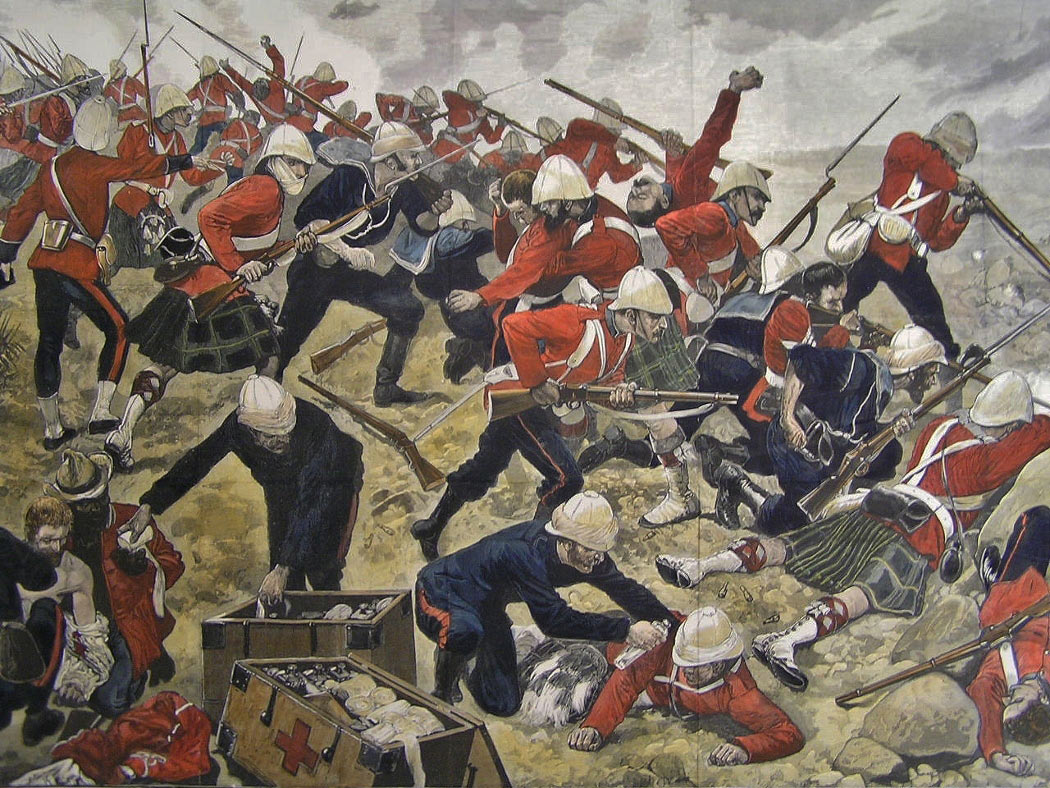|
Francis Murray Austin
Vice-Admiral Sir Francis Murray Austin, KBE, CB (10 September 1881 – 19 June 1953) was a Royal Navy officer who served in both world wars. Biography Austin entered the ''Britannia'' in 1895 as a naval cadet and went to sea in HMS ''Repulse'' in 1897 as midshipman, participating in that year's Diamond Jubilee naval review at Spithead. He became sub-lieutenant in 1900 and was promoted to lieutenant in 1902, having obtained four first-class certificates. He then specialised in gunnery, serving as gunnery officer of HMS ''Hermione'', HMS ''Isis'', HMS ''Temeraire'', and HMS ''Colossus''. He was promoted to commander in 1913. On the outbreak of the Second World War in 1939, Austin returned to active service as a commodore in the Royal Naval Reserve. He served continuously as a convoy commodore Convoy commodore also known as commodore, convoys was the title of a civilian put in charge of the good order of the merchant ships in the British convoys used during World War II. U ... [...More Info...] [...Related Items...] OR: [Wikipedia] [Google] [Baidu] |
Vice-admiral (Royal Navy)
A vice-admiral (VAdm) is a flag officer rank of the Royal Navy and equates to the NATO rank code OF-8. It is immediately superior to the Rear admiral (Royal Navy), rear admiral rank and is subordinate to the Admiral (Royal Navy), full admiral rank. The equivalent rank in the British Army and Royal Marines is Lieutenant-general (United Kingdom), lieutenant-general; and in the Royal Air Force, it is air marshal. History The Royal Navy has had vice-admirals since at least the 16th century. When the fleet was deployed, the vice-admiral would be in the leading portion or Vanguard, van, acting as the deputy to the admiral. The rank of Vice-Admiral evolved from that of Lieutenant of the Admiralty (1546–1564) that being an officer who acted as secretary to the Lord High Admiral of the United Kingdom, Lord Admiral of England and lapsed in 1876 but was revived in 1901 by Edward VII, King Edward VII. Prior to 1864 the Royal Navy was divided into coloured squadrons which determined his ... [...More Info...] [...Related Items...] OR: [Wikipedia] [Google] [Baidu] |
HMS Hermione (1893)
HMS ''Hermione'' was an Royal Navy protected cruiser launched at Devonport in 1893. She served in World War I and was sold in 1921. She was renamed training ship ''Warspite'' in 1922, and broken up in 1940. ''Hermione'' was a 10-gun twin-screw cruiser of 4360 tons, , and capable of . The vessel was in length, had a beam of , and a draught of . Service history In 1896 ''Hermione'', commanded by Captain Charles R. Arbuthnot, was one six ships which was specially commissioned as part of a new squadron in reply to a congratulatory telegram from the German Emperor to President Paul Kruger on the repulse of Dr. Jameson's Raid. The squadron, known as the Particular Service Squadron, was commanded by Rear-Admiral Alfred Taylor Dale with his flag in . ''Hermione'' was assigned to the China Station in 1898. In 1900 she played a minor part in the third China war or Boxer Rebellion. In December 1899 and April 1900, Marines from ''Hermione'' served as an honour guard and pa ... [...More Info...] [...Related Items...] OR: [Wikipedia] [Google] [Baidu] |
Companions Of The Order Of The Bath
The Most Honourable Order of the Bath is a British order of chivalry founded by King George I of Great Britain, George I on 18 May 1725. Recipients of the Order are usually senior British Armed Forces, military officers or senior Civil Service (United Kingdom), civil servants, and the monarch awards it on the advice of His Majesty's Government. The name derives from an elaborate medieval ceremony for preparing a candidate to receive his knighthood, of which ritual bathing (as a symbol of Ritual purification, purification) was an element. While not all knights went through such an elaborate ceremony, knights so created were known as "knights of the Bath". George I constituted the Knights of the Bath as a regular Order (honour), military order. He did not revive the order, which did not previously exist, in the sense of a body of knights governed by a set of statutes and whose numbers were replenished when vacancies occurred. The Order consists of the Sovereign of the United King ... [...More Info...] [...Related Items...] OR: [Wikipedia] [Google] [Baidu] |
Knights Commander Of The Order Of The British Empire
The Most Excellent Order of the British Empire is a British order of chivalry, rewarding valuable service in a wide range of useful activities. It comprises five classes of awards across both civil and military divisions, the most senior two of which make the recipient either a knight if male or a dame if female. There is also the related British Empire Medal, whose recipients are affiliated with the order, but are not members of it. The order was established on 4 June 1917 by King George V, who created the order to recognise 'such persons, male or female, as may have rendered or shall hereafter render important services to Our Empire'. Equal recognition was to be given for services rendered in the UK and overseas. Today, the majority of recipients are UK citizens, though a number of Commonwealth realms outside the UK continue to make appointments to the order. Honorary awards may be made to citizens of other nations of which the order's sovereign is not the head of state. Cu ... [...More Info...] [...Related Items...] OR: [Wikipedia] [Google] [Baidu] |
Royal Navy Vice Admirals
Royal may refer to: People * Royal (name), a list of people with either the surname or given name * A member of a royal family or royalty Places United States * Royal, Arkansas, an unincorporated community * Royal, Illinois, a village * Royal, Iowa, a city * Royal, Missouri, an unincorporated community * Royal, Nebraska, a village * Royal, Franklin County, North Carolina, an unincorporated area * Royal, Utah, a ghost town * Royal, West Virginia, an unincorporated community * Royal Gorge, on the Arkansas River in Colorado * Royal Township (other) Elsewhere * Mount Royal, a hill in Montreal, Canada * Royal Canal, Dublin, Ireland * Royal National Park, New South Wales, Australia Arts, entertainment, and media * ''Royal'' (Jesse Royal album), 2021 * Royal (Ayo album), 2020 * '' The Royal'', a British medical drama television series * '' The Royal Magazine'', a monthly British literary magazine published between 1898 and 1939 * '' The Raja Saab'', working ti ... [...More Info...] [...Related Items...] OR: [Wikipedia] [Google] [Baidu] |
1953 Deaths
Events January * January 6 – The Asian Socialist Conference opens in Rangoon, Burma. * January 12 – Estonian émigrés found a Estonian government-in-exile, government-in-exile in Oslo. * January 14 ** Marshal Josip Broz Tito is chosen President of Socialist Federal Republic of Yugoslavia, Yugoslavia. ** The Central Intelligence Agency, CIA-sponsored Robertson Panel first meets to discuss the Unidentified flying object, UFO phenomenon. * January 15 ** Georg Dertinger, foreign minister of East Germany, is arrested for spying. ** British security forces in West Germany arrest 7 members of the Naumann Circle, a clandestine Neo-Nazi organization. * January 19 – 71.1% of all television sets in the United States are tuned into ''I Love Lucy'', to watch Lucy give birth to Little Ricky, which is more people than those who tune into Dwight Eisenhower's inauguration the next day. This record is never broken. * January 24 ** Mau Mau Uprising: Rebels in Kenya kill th ... [...More Info...] [...Related Items...] OR: [Wikipedia] [Google] [Baidu] |
1881 Births
Events January * January 1– 24 – Siege of Geok Tepe: Russian troops under General Mikhail Skobelev defeat the Turkomans. * January 13 – War of the Pacific – Battle of San Juan and Chorrillos: The Chilean army defeats Peruvian forces. * January 15 – War of the Pacific – Battle of Miraflores: The Chileans take Lima, capital of Peru, after defeating its second line of defense in Miraflores. * January 24 – William Edward Forster, chief secretary for Ireland, introduces his Coercion Bill, which temporarily suspends habeas corpus so that those people suspected of committing an offence can be detained without trial; it goes through a long debate before it is accepted February 2. Note that Coercion bills had been passed almost annually in the 19th century, with a total of 105 such bills passed from 1801 to 1921. * January 25 – Thomas Edison and Alexander Graham Bell form the Oriental Telephone Company. February * Febru ... [...More Info...] [...Related Items...] OR: [Wikipedia] [Google] [Baidu] |
Convoy Commodore
Convoy commodore also known as commodore, convoys was the title of a civilian put in charge of the good order of the merchant ships in the British convoys used during World War II. Usually the convoy commodore was a retired naval officer or a senior merchant captain drawn from the Royal Naval Reserve. He was aboard one of the merchant ships. The convoy commodore was distinguished from the commander of the convoy's escort, always a naval officer. Description Convoy commodores were based at HMS ''Eaglet'', the Royal Navy's shore establishment at Liverpool. Commodores had a peripatetic role, sailing with each convoy as assigned in a suitable ship. This ship would be the convoy flagship, but remained under the command of its master, the commodore and his team merely taking passage. The commodores were accompanied by a small team of ratings, usually a yeoman and two or three signalers; these teams would stay together and work with the same commodore throughout the campaign, allow ... [...More Info...] [...Related Items...] OR: [Wikipedia] [Google] [Baidu] |
Royal Naval Reserve
The Royal Naval Reserve (RNR) is one of the two volunteer reserve forces of the Royal Navy in the United Kingdom. Together with the Royal Marines Reserve, they form the Maritime Reserve. The present RNR was formed by merging the original Royal Naval Reserve, created in 1859, and the Royal Naval Volunteer Reserve (RNVR), created in 1903. The Royal Naval Reserve has seen action in World War I, World War II, the Iraq War and the War in Afghanistan. History Establishment The Royal Naval Reserve (RNR) has its origins in the Register of Seamen, established in 1835 to identify men for naval service in the event of war, although just 400 volunteered for duty in the Crimean War in 1854 out of 250,000 on the Register. This led to a Royal Commission on Manning the Navy in 1858 and 1859, which in turn led to the Naval Reserve Act 1859. This established the RNR as a reserve of professional seamen from the British Merchant Navy and fishing fleets, who could be called upon durin ... [...More Info...] [...Related Items...] OR: [Wikipedia] [Google] [Baidu] |
Second World War
World War II or the Second World War (1 September 1939 – 2 September 1945) was a World war, global conflict between two coalitions: the Allies of World War II, Allies and the Axis powers. World War II by country, Nearly all of the world's countries participated, with many nations mobilising all resources in pursuit of total war. Tanks in World War II, Tanks and Air warfare of World War II, aircraft played major roles, enabling the strategic bombing of cities and delivery of the Atomic bombings of Hiroshima and Nagasaki, first and only nuclear weapons ever used in war. World War II is the List of wars by death toll, deadliest conflict in history, causing World War II casualties, the death of 70 to 85 million people, more than half of whom were civilians. Millions died in genocides, including the Holocaust, and by massacres, starvation, and disease. After the Allied victory, Allied-occupied Germany, Germany, Allied-occupied Austria, Austria, Occupation of Japan, Japan, a ... [...More Info...] [...Related Items...] OR: [Wikipedia] [Google] [Baidu] |
HMS Isis (1896)
HMS ''Isis'' was an protected cruiser built for the Royal Navy in the mid-1890s. Technical details Eclipse-class second-class protected cruisers were preceded by the shorter Astraea-class cruisers. ''Isis'' had a displacement of when at normal load. It had a total length of , a beam of , a metacentric height of around , and a draught of . It was powered by two inverted triple-expansion steam engines which used steam from eight cylindrical boilers. Using normal draught, the boilers were intended to provide the engines with enough steam to generate and to reach a speed of ; using forced draft, the equivalent figures were and a speed of . Eclipse-class cruisers carried a maximum of of coal and achieved maximum speed of in sea trials. It carried five 40-calibre quick-firing (QF) guns in single mounts protected by gun shields. One gun was mounted on the forecastle, two on the quarterdeck and one pair was abreast the bridge. They fired shells at a muzzle velocity of . ... [...More Info...] [...Related Items...] OR: [Wikipedia] [Google] [Baidu] |
Lieutenant (Royal Navy)
LieutenantThe pronunciation of ''lieutenant'' is generally split between , , generally in the United Kingdom, Ireland, and Commonwealth countries, and , , generally associated with the United States. See lieutenant. (abbreviated Lt, LT (U.S.), LT(USN), Lieut and LEUT, depending on nation) is a commissioned officer rank in many English-speaking nations' navies and coast guards. It is typically the most senior of junior officer ranks. In most navies, the rank's insignia may consist of two medium gold braid stripes, the uppermost stripe featuring an executive curl in many Commonwealth of Nations; or three stripes of equal or unequal width. The now immediately senior rank of lieutenant commander was formerly a senior naval lieutenant rank. Many navies also use a subordinate rank of sub-lieutenant. The appointment of "first lieutenant" in many navies is held by a senior lieutenant. This naval lieutenant ranks higher than an army lieutenants; within NATO countries the naval r ... [...More Info...] [...Related Items...] OR: [Wikipedia] [Google] [Baidu] |





